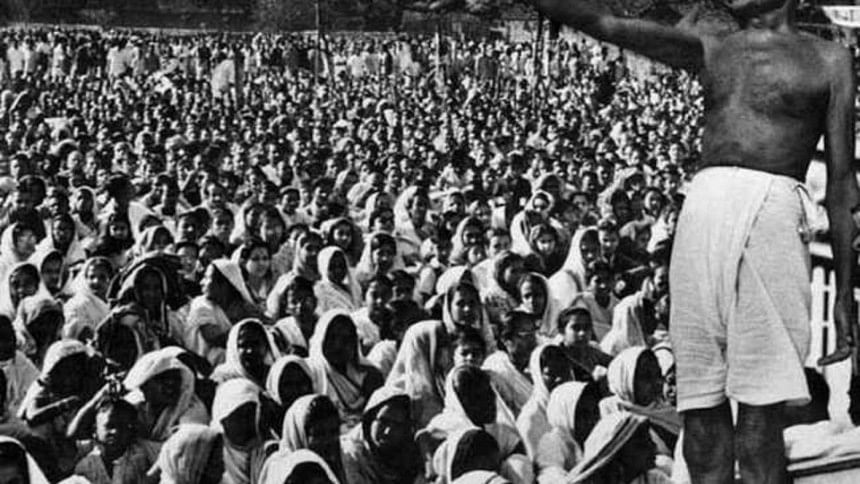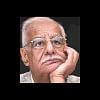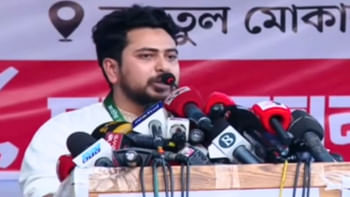A page from quit India movement

As India prepares to commemorate 68 years of freedom from British imperial rule, it may be worth remembering a dusty town in Uttar Pradesh that suffered the consequences of declaring itself an independent country for a few days in 1942.
The sovereign Republic of Ballia, headed by Chittu Pandey, managed to survive for some seven days before British-led military and police forces managed to regain control and unleashed a series of atrocities that are still remembered by the descendants of those who were raped, beaten and killed by shooting, firing and burning.
At the orders of an English police officer called Fletcher, an estimated 130 leaders of the local independence movement were hanged. Those who were not hanged were forced to climb trees where they were bayoneted. Those who managed to avoid the tree punishments were taken to local jails where they were suspended by their legs and starved. Those who avoided the leg suspension torture were forced to sit together on the floors of the jails where they were fed chapattis that gave them dysentery.
Ballia offers a small insight into the realities of colonial rule where 'lesser breeds' like the Indians suffered unimaginable miseries at the hands of their white rulers. Some of those tortures resulting in death, whether it involved bayoneting or being forced to lie on blocks of ice for hours on end, were not all that different from what the Jews endured at the hands of the Nazis.
The difference is that what happened in places like Auschwitz in Germany has been well documented and some of those responsible for what happened in the concentration camps have been brought to justice, if not by the allied powers and post Nazi Germany at the international court of justice in the Hague, then certainly by the modern state of Israel.
Atrocities committed in places like Ballia that joined in the Quit India movement of 1942 are still not fully documented. As for the likes of Commissioner Fletcher, no one to this day knows what happened to him and whether he was ever held to account for the murders of so many innocent civilians.
In recent years it has become fashionable among some historians try and suggest that the 200 years of colonial rule were not all that bad and that India gained more than it lost from interacting first with the East India Company, a gang of thugs dressed up as so-called gentleman traders, and then face-to-face with the British government.
In practice there was not that much difference between the brutality and exploitation practiced by the company and the government. One small example should suffice. It was British government representatives who forced baptism on Maharaja Ranjit Singh's son and heir, Duleep Singh. And it was British government officials, including Lord Dalhousie who, after presiding over the looting of the Lahore treasury, 'persuaded' young Duleep Singh to hand over the fabled Kohinoor diamond in person to Queen Victoria. Today that same Kohinoor forms the centrepiece of the British monarch's crown.
Back to the benefits of 'gora' rule. It was the British after all, so the argument goes, who introduced Indians to the English language and helped to develop the country's infrastructure, whether by bringing in piped water, electricity and sewerage facilities to urban areas, or laying the foundations both of the railways and the posts and telegraph services. And it was the British again who introduced key religious and social reforms such as the abolition of Sati and child marriage in 1829 and the Widows Remarriage Act of 1856.
Yet the Indians were quite capable of behaving like gentlemen. When the East India Company established control in the name of trade in 18th century India, its officers duly went about trebling the taxes that the local peasants were obliged to pay. These taxes remained in place even during times of dire famine. How different it was when local rulers were in charge and dispensed with taxes during times of calamity!
In Ballia, 200 years later, it is instructive to recall just how the British administration was treated by the leaders of the independence movement. British officials and their local toadies were gathered together and peacefully ushered across the railway line that divided the civil and military lines of the town. None were harmed in any way.
Even more instructive was the unity that prevailed in those days between Hindus and Muslims. Inevitably, when they returned the British committed all kinds of atrocities. They did not want the national flag to be hoisted in Ballia and they shot and killed anyone who dared to do so. Emerging from the shadows of the town was a young Muslim who was killed when he tried to raise a flag that was not the Union Jack. It is still a matter of local pride in Ballia that before the flag fell to the ground, another volunteer took it upon himself to grab and support that symbol of national pride. Some 11 men were killed one after another by soldiers of the crown.
Significantly, this gesture of defiance by the citizens of Ballia was never reported in the British media. This was during the Second World War when Winston Churchill was Prime Minister. As the war was coming to a close he is recorded as saying that Britain would never give up its Indian Empire.
His recorded comments include, "I hate Indians. They are a beastly people with a beastly religion." Just as shocking were his earlier comments about Mahatma Gandhi. "It is alarming and nauseating to see Mr Gandhi, a seditious Middle Temple lawyer, now posing as a fakir of a type well known in the east, striding half naked up the steps of the vice regal palace, while he is still organising and conducting a campaign of civil disobedience, to parlay on equal terms with the representative of the Emperor-King."
Churchill did not and could not anticipate that Ballia would ignite the fire which five years later would engulf and destroy colonial rule both in India and beyond. Ironically, the statues of both Gandhi and Churchill today stand close to each other in a prestigious location opposite the British parliament in London.
The writer is an Indian columnist.

 For all latest news, follow The Daily Star's Google News channel.
For all latest news, follow The Daily Star's Google News channel. 



Comments